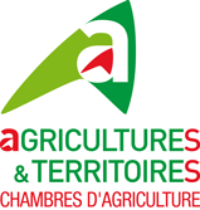Document type : article published in Le Monde (subscriber edition)
Author: Mathilde Gérard
Preview: Greenpeace maps industrial farm distribution in France
The figures are eye-watering: 60% of livestock in France is found on just 3% of livestock farms. Whereas extensive, open-air, small-scale livestock farming is the type of farming we hear and see promoted in politicians' speeches and advertising, the figures clearly show that the reality is a concentration of French animals on large farms. Distribution across the country is very uneven:70% of such farms are located in the Grand Ouest, in Brittany and the Loire region.
In a report published on Tuesday May 16, Greenpeace analyzes the number and distribution of farms with the most animals in France, denouncing the "industrialization of animal production". The organization's study is based on data from January provided by the French Ministry of Ecological Transition, listing some 3,000 livestock businesses subject to environmental protection regulations (ICPEs) that are required to have formal permits, i.e. they must be inspected by the government.
These ICPEs are classified using precise thresholds by species, for example, farms with more than 40,000 laying hens or broilers, more than 2,000 pigs or more than 400 dairy cows. For Greenpeace, they are "factory farms". "From a certain size upwards, we are no longer dealing with farming but with an industrial system, with ad hoc risk management", explains Suzanne Dalle, the association's campaign leader on agriculture.
Despite its duty to control and monitor these ICPEs, the ministry's database contained errors (incorrect business registration numbers and addresses, inconsistencies in the numbers of sites) which Greenpeace had to correct to be able to use the data. These iother small companion animalscuracies illustrate the difficulty of tracking the evolution of these farms over time.
In 2019, the association carried out a similar survey of factory farms, but lacked essential information on animal numbers, making it impossible to reach conclusions on possible trends. Additionally, Greenpeace has modified how information is presented: in 2019, the map allowed users to zoom right down to individual farm locations and this led to a poor reception from the farming profession, subsequently fuelling accusations of "farmer-bashing". For this new study, Greenpeace has adopted a different approach, concentrating on providing data by region: "Our previous map was too explicit in terms of farm locations" explains Sandy Olivar from Greenpeace, who also took part in the study. Our purpose is not to name names, but to expose a system. [end of part available to non-subscribers]






